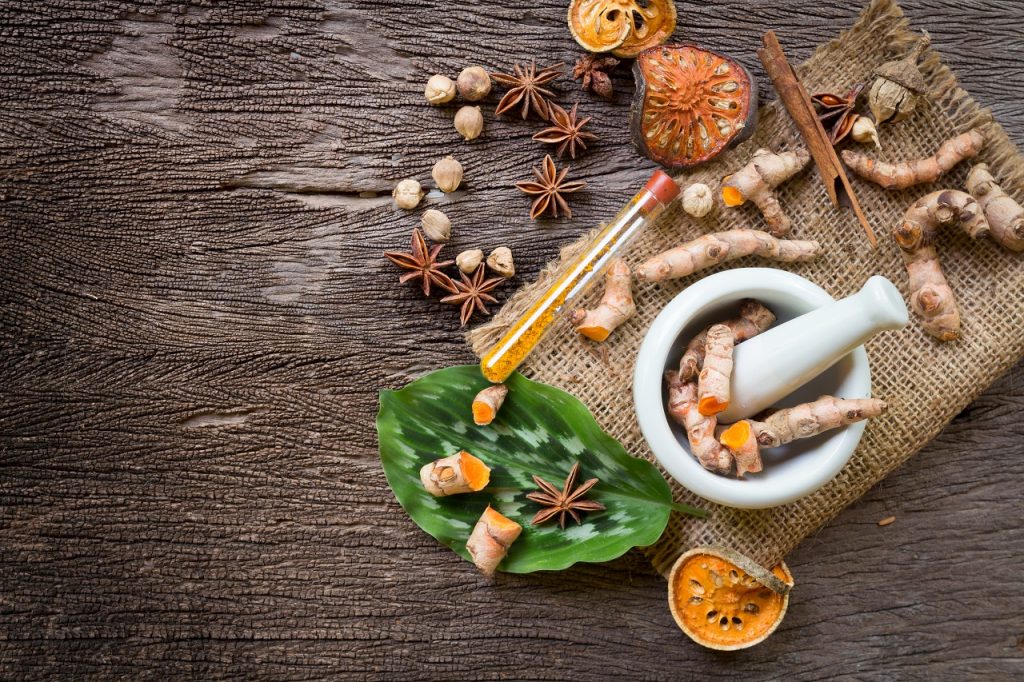 Ayurveda, the “Science of Life” is an invaluable treasure to India from our ancestors which is trending even in the second wave of the current pandemic. According to classical texts, the aim of Ayurveda is “To maintain the health of a healthy person through prevention and to treat the health issues of a sick person”. Our body needs to maintain good metabolism and immunity to fight against foreign invaders like germs and other external disease-causing factors. So, it is critical for us to maintain and boost our immunity on a regular basis to maintain our health. Ayurvedic concoctions are the best and easy choice to make at home yourself and have it frequently.
Ayurveda, the “Science of Life” is an invaluable treasure to India from our ancestors which is trending even in the second wave of the current pandemic. According to classical texts, the aim of Ayurveda is “To maintain the health of a healthy person through prevention and to treat the health issues of a sick person”. Our body needs to maintain good metabolism and immunity to fight against foreign invaders like germs and other external disease-causing factors. So, it is critical for us to maintain and boost our immunity on a regular basis to maintain our health. Ayurvedic concoctions are the best and easy choice to make at home yourself and have it frequently.
Ayurvedic Concoctions can be basically made with dry herbs, or dry herb powders or some of the fresh herbs too. As the herbs are boiled in water, the water absorbs all the therapeutic properties from the herbs making it better for digestion and absorption into our body.
5 Varieties of Ayurvedic Concoctions For Immunity
1. Turmeric-Pepper Concoction
Ingredients:
- Turmeric powder – ¼ tsp
- Black pepper Powder – ¼ tsp
- Jeera – ¼ tsp
- Water – 1 glass
- Lemon – 1 tsp
- Himalayan Pink salt/Sea salt/Rock salt – ¼ tsp
Method: Mix turmeric, pepper and jeera in water and boil it for 3-5 mins to bring it down to 1 cup of concoction. Add lemon and salt before you sip the warm concoction.
Benefits:
- The Cucumin in Turmeric is anti-inflammatory and has an immune modulatory effect which enhances metabolism and boosts immunity.
- Piperine in Black Pepper enhances the absorption of curcumin making it a good combination with Turmeric. It is a rich antioxidant that prevents cell damage, increases the absorption of essential nutrients like calcium and selenium, helps in easy digestion, and controls blood sugar levels.
- Jeera is a great source of iron besides potassium, helps in building immune system
- Lemon, high in Vitamin C can fight against bacterial and viral infections by enhancing immune system
2. Fenugreek-Coriander Concoction
Ingredients:
- Fenugreek/Methi seeds – ½ tsp
- Coriander/Dhaniya seeds – ½ tsp
- Water – 1.5 glass
- Milk (Optional) – ¼ cup
- Jaggery – ¼ – ½ tsp
Method: Soak Methi and Coriander seeds in 1.5 glass of water for 30-60 mins. Boil it for 5-8 mins to reduce it to ¾ cup. You can add milk at this stage and boil it for 1 more minute. Turn the heat off and add jaggery just before drinking.
Benefits:
- Methi/Fenugreek may help to reduce the risk of bacterial fungal and viral infections. It generates heat in the body and is excellent for Kapha dominant people with weaker immunity.
- Coriander has powerful antioxidants that prevent cellular damage caused by free radicals.
- Jaggery is a natural sweetener rich in iron, zinc, and selenium.
3. Pomegranate Peel Concoction
Ingredients:
- Peel of half pomegranate
- Raw Honey – 1 tsp
- Water – 1 glass
Method: Boil a glass of water. Put the pomegranate peel in the boiling water. Let it boil for 3 minutes. Turn off the heat and cover it for 15 minutes. Add 1 tsp of honey to the concoction, before you sip it warm.
Benefits:
- Pomegranate peels help in restoring overall health. It acts as a liver detox. It soothes sore throat and stomach infections. It helps in dental hygiene and promotes healthy cell growth.
- Pomegranate peels can be dried and stored as a powder or peel to use it for a long time.
- Raw honey has healing, antibacterial and antiseptic properties. Phytonutrients in honey can boost the immunity.
4. Licorice-Ginger Concoction
Ingredients:
- 1 inch Licorice root or ¼ tsp of licorice powder
- 2-3 slices of ginger or ¼ tsp of ginger powder / ginger paste
- Water – 1 glass
- Raw Honey – 1 tsp
Method: Heat 1 glass of water. Add ginger powder and licorice powder. Bring it to a boil and simmer for 15 minutes. Add 1 tsp of honey before you enjoy this concoction.
Benefits:
- Licorice Cleanses respiratory system as it is a strong decongestant, a natural remedy for cold, cough, sore throat, and flu
- Ginger is a powerful antioxidant, anti-inflammatory in nature and helpful in reducing cough. It also enhances the immune response and is good for digestion
5. Onion-Cinnamon Concoction
Ingredients:
- Onion – 1 small (diced)
- Cardamom Powder – ½ tsp
- Cinnamon Powder – ¼ tsp
- Water – 2 cups
- Jaggery – 1 tsp
Method: Bring 2 glasses of water to boil, add all the ingredients and bring it down to 1 cup of liquid. Simmer for 15 mins and sip it while it is warm.
Benefits:
- Onions are rich in flavonoids that help in fighting infections and inflammation. It is extremely useful in strengthening the capillary walls of the lungs and prevents the damage of bronchial tubes in any respiratory infections
- Cardamom and Cinnamon are anti-inflammatory and effective remedies for cold, and flu as they impart warmth to our body. Both spices are among the ingredients in most commonly used Ayurvedic cough medicines like Sitopaladi churna and Thaleesapatradi churna.
These Ayurvedic Concoctions can be consumed once at any time of the day for about 2-3 days in a week preferably with a gap to maintain the metabolism and boost the immunity. Children under the age of 12 can have ½ a cup of any of these. People with diabetes should be cautious about the amount of honey and jaggery that they add – lesser the better. These are just preventive remedies and effective with mild symptoms of flu or cough and cold. Medical advice is always suggested with moderate to severe symptoms.
Before trying any of these, do consult your doctor in case you have any allergies. Try these Ayurvedic Concoctions at home and let us know your thoughts in the comments below. For more Ayurvedic Remedies or immunity boosting tips, check out Healthy Reads or tune in to GOQii Play.
To get these tips directly from your GOQii Coach, subscribe to personalized coaching here: https://goqiiapp.page.link/wssu
Stay home, stay safe, boost your immunity and #BeTheForce
 The importance of healthy immune function is something we tend to neglect until it’s flu season or we are faced with a pandemic. With the ongoing coronavirus outbreak, you’re probably reaching for vitamin C capsules, but there’s a lot more you can do to strengthen immunity. Vitamin C supplementation is not the most effective immune-boosting strategy, as dietary intake of nutrients is more effective than supplementation. Moreover, there are other nutrients and natural therapeutic ingredients, diet, and lifestyle practices that are important for healthy immune function. Ayurveda emphasizes the importance of such practices at all times because of its focus on disease prevention. It makes sense for us to revisit some of the best Ayurvedic remedies for immunity at this time.
The importance of healthy immune function is something we tend to neglect until it’s flu season or we are faced with a pandemic. With the ongoing coronavirus outbreak, you’re probably reaching for vitamin C capsules, but there’s a lot more you can do to strengthen immunity. Vitamin C supplementation is not the most effective immune-boosting strategy, as dietary intake of nutrients is more effective than supplementation. Moreover, there are other nutrients and natural therapeutic ingredients, diet, and lifestyle practices that are important for healthy immune function. Ayurveda emphasizes the importance of such practices at all times because of its focus on disease prevention. It makes sense for us to revisit some of the best Ayurvedic remedies for immunity at this time.


